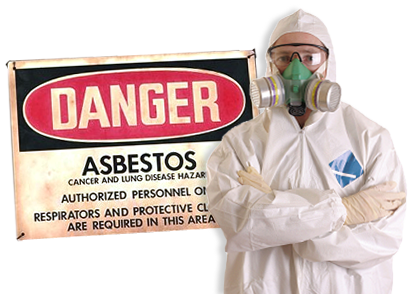
Residential buildings may contain asbestos in their walls, ceilings, floors, roofs, siding, HVAC systems, insulation, pipes and more. When asbestos-containing material is disturbed and improperly handled, tiny hazardous fibers are released into the air and may cause lung cancer and other illnesses. It’s important homeowners identify asbestos and have it properly removed before beginning remodeling projects.
How to determine if asbestos is in your home
The best way to determine if asbestos is in your home is to have accredited inspectors like Top Notch perform an asbestos survey. Read on for more information about an asbestos survey, when we can perform an asbestos survey and schedule an appointment with us. Below is a list of materials that may contain asbestos.
Asbestos Survey Requirements
All commercial buildings regardless of construction date, and residential buildings constructed before Jan. 1, 2004, must have an asbestos survey conducted by an accredited inspector prior to any demolition or renovation activities.
A copy of the asbestos survey report must be on-site during all renovation or demolition activities, and must be provided to DEQ upon request.
Owner-occupants of a single unit private residence performing a renovation inside their home are exempt from the asbestos survey rule. However, DEQ recommends owner occupants have an asbestos survey performed or take samples of suspect materials and send the samples to a lab for analysis prior to renovation projects. Owner-occupants are required to follow all asbestos packaging, labeling and disposal
requirements, and lab analysis is the only way to identify if asbestos is present in materials. The owner occupant exemption does not apply if the residence is going to be demolished.
Demolition and renovation
Demolition is defined as wrecking or removing a load-supporting structural feature of a facility together with related handling operations or the intentional burning of a facility.
Renovation is defined as altering one or more facility components that does not involve removing load supporting structural features. Renovation includes the replacing, stripping, or repairing of facility components, such as mechanical ventilation systems, pipes, ceilings, walls, flooring and insulating materials.
Who can perform the survey and generate the asbestos survey report?
Only an accredited asbestos inspector may perform the asbestos survey and generate an asbestos survey report.
What does the survey involve?
DEQ requires at least one bulk sample of each homogeneous material suspected to contain asbestos to be collected and analyzed at a laboratory before any demolition or renovation activity. For sprayed or troweled on surfacing materials, at least three random bulk samples for each homogeneous area must be collected.
Starting Jan. 1, 2021, each asbestos bulk sample must be analyzed by a laboratory that participates in a nationally recognized accreditation or testing program. At that time, DEQ will maintain a public list of accepted laboratories on its website.
When complete demolition or extensive renovation is planned, an asbestos survey of the entire facility is required. When partial renovation is planned, such as a kitchen remodel, a survey is required for that area of the structure only. Alternatively, material can be presumed to contain asbestos, in which case it must be treated, removed, handled, managed, transported and disposed of as asbestos-containing material.
Asbestos survey reports
Asbestos survey reports must now meet standard requirements. This requirement ensures all asbestos surveys evaluate and report consistent information.
An asbestos survey report must include all of the following:
- Dates the asbestos survey was performed.
- A copy of the accredited inspector(s) certificate and phone number(s).
- The project site address and location where the survey was performed.
- The facility owner or operator’s name and phone.
- Description of the facility and area surveyed, including past and current use, area square footage, approximate construction date and number of floors.
- The purpose of the asbestos survey.
- Description of any limitation of the asbestos survey.
- A table listing all of the materials sampled and identified as asbestos-containing or presumed asbestos containing including the percent asbestos and type of asbestos, description of the material color, texture and pattern, the location of the material, description of the material condition as in good condition or in poor condition, identification of the material as friable or non friable and the approximate quantity of the material;
- A recommended response action.
- A complete copy of the laboratory report including the laboratory name, address and phone number, unique sample analysis identification number, bulk sample analysis results, name of the analyst and the completed chain of custody for the samples.
